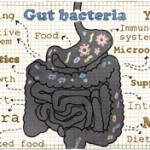He said it’s not known yet whether the mechanisms his lab has found are systemic or confined to the gut.
“Worm infections can block MS-like disease in mice,” he said. “The same worm can regulate asthma-like disease. But we do not know if worms trigger the same immune regulatory mechanisms in all tissues.”
ad goes here:advert-1
ADVERTISEMENT
SCROLL TO CONTINUE
Thomas R. Collins is a medical writer based in Florida.
ad goes here:advert-2
ADVERTISEMENT
SCROLL TO CONTINUE
Second Chance
If you missed this session, it’s not too late. Catch it on SessionSelect.
References
- David LA, Maurice CF, Carmody RN, et al. Diet rapidly and reproducibly alters the human gut microbiome. Nature. 2014 Jan 23;505(7484):559–563.
- Devkota S, Wang Y, Musch MW, et al. Dietary-fat induced taurocholic acid promotes pathobiont expansion and colitis in Il10-/- mice. Nature. 2012 Jul 5;487(7405):104–108.
- Carmody RN, Gerber GK, Luevano JM, et al. Diet dominates host genotype in shaping the murine gut microbiota. Cell Host Microbe. 2015 Jan 14;17(1):72–84.


